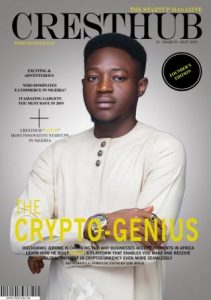We live in a world with a lot of disabled people and according to the World Health Organization about 1 billion people or 15% of the world’s population experience some form of disability. The World report on disability, published in 2011, said about 25 million Nigerians had at least one disability, while 3.6 million of these had very significant difficulties in functioning. The 2006 Nigerian census reported 3,253,169 people with disabilities or 2.32% of the total population of 140,431,790 in that year.
A disability is any medical condition (physical or mental) that limits a person’s movements, senses or activities making it difficult to effectively interact with the world around them. Examples of common disabilities we see every day are people living with vision impairment, deafness, mental health conditions, autism and even dyslexia.
Children and adults with disabilities receive basic education the same way normal people do. Education is not only about schooling. It involves the process of sharing, developing, building and strengthening oneself. We find these special persons in our different educational levels from primary schools down to tertiary institutions.
For instance, the Faculty of Education in the University of Jos has the largest number of students living with disabilities. The faculty is said to be the largest in Sub-Saharan Africa, unfortunately, these special students are not provided with adequate support to enhance their learning experience.
One effective learning method that universities can adopt to aid these students who learn and think differently from others is the use of ‘Assistive Technology’.
Assistive technology is designed to help students who have learning disabilities. They are tools that include any type of equipment that aids them to capitalize on their strengths and minimize their weaknesses by making tasks possible and easier.
For our education administrators to effectively implement this innovation in our schools, a number of factors need to be considered from the number of disabled students in the institution to the cost and availability of these devices, trained staff or lecturers involved and the school environment. If these are carefully looked into, the adoption of assistive technology could be successful.
There are various types of assistive technologies for different types of disabilities. Below are a few that can be used in the classroom to aid special students:
- Laptop computers with speech-to-text /text-to-speech softwares
- Refreshable Braille displays
- Digital speed recorders
- Electronic spell checkers
- Talking calculators
Laptop computers and smaller tablet devices are beneficial to students with disabilities. They can be made available in numbers and properly installed with text-to-speech or speech-to-text software like Kurzweil, NaturalReader and TextAloud3 that can read aloud and transcribe spoken words to digital text. This software allows and helps students improve their reading comprehension, decode new words, provide reading and writing support and more.
Refreshable Braille displays are a brilliant tool that can be used with a screen reader. The Braille displays are devices that consist of a rubber strip with pins that can be raised or lowered as required to spell out characters in Braille. Students will be able to read the Braille using their fingers from left to right, line by line. Once they’re through with that line, it automatically refreshes a new one.
Students with disabilities, especially the blind may find it difficult to effectively understand the lecturer during classes and therefore need a better alternative to learning. A variable speed recorder is an ideal solution. All these students need to do is locate the record button and hit ‘record’ while they are in class. Later on they can slow down the recorded lecture to the speed of their choice, so they can listen to it as many times as they want and catch up in class. Lecturers should also be very considerate with this option and assist these special students the best way they can.
The electronic spell checkers and electronic dictionaries can help disabled students and dyslexic students select or identify appropriate words and correct spellings during the process of writing a test, an exam or even a class exercise. This software can read aloud and also display the words on the screen, so these students can hear and see the words.
A lot of disabled students have a history of one form of failure or the other especially in subjects involving arithmetic problems. Disabled students can benefit from a talking calculator. It is a simple tool to use. Talking calculators will indicate each number or symbol pressed on the calculator enabling them to choose correctly and solve mathematical problems.
Students living with disabilities learn and function in different ways from their peers. It is very important to give them the care and attention they need in the classroom and general school setting. By providing these types of assistive technology and more, the unique needs of these students will be met. They can become exceptional individuals and accomplish their desired goal.































